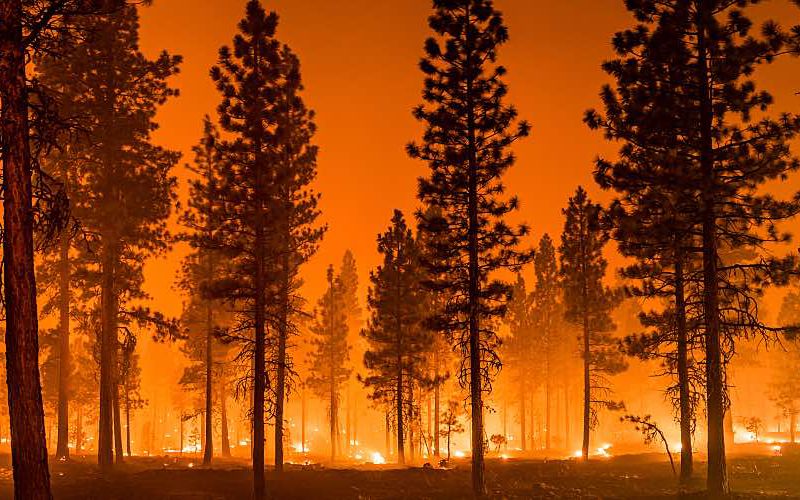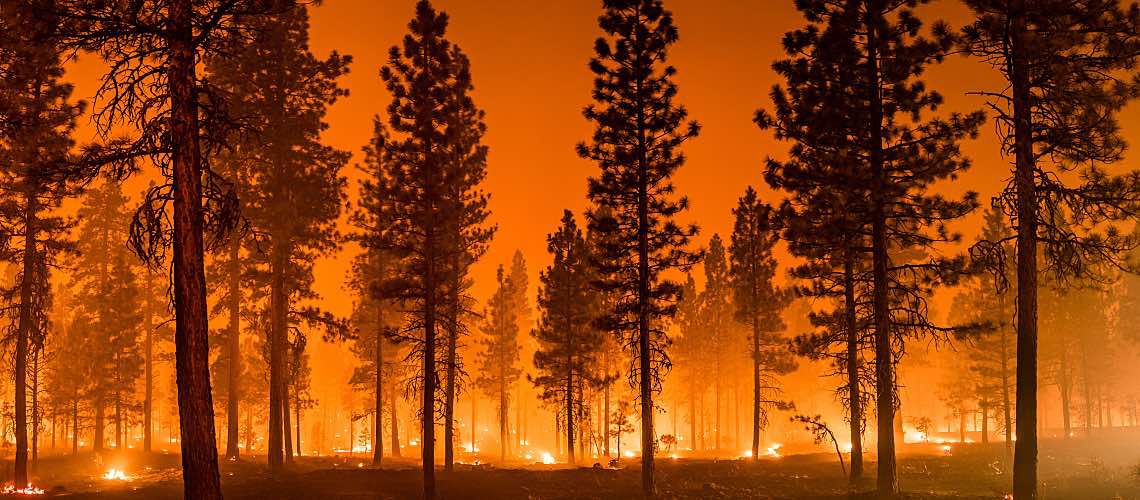Wildfires Impact Water Quality in the Short and Long Term


Wildfires ravage homes, destroy timber, and demolish habitats. They release greenhouse gases, contaminate air, and reshape the landscape. As of late August 2021, the National Interagency Fire Center reported 42,647 wildfires this year, with almost 4.9 million acres burned. But as fires become more severe and burn more acres, especially in the western U.S., they threaten to damage water quality and reduce water quantity for drinking, irrigation, fisheries, and recreation.
Short-term Impacts
While a fire is raging, ash and associated contaminants fall on streams, lakes, and reservoirs. The ash and smoke aren't restricted to the local area, however — in 2021, smoke from western wildfires produced hazy skies and unhealthy air quality thousands of miles east, according to CNBC.
The fire's flames strip away vegetation that holds soil in place and retains water. Intense storms put out fires but may wash away immense quantities of ash, sediment, and nutrients into water bodies downstream. Worse still, fires don't only burn trees — they burn everything in their path, from appliances used in homes to chemicals stored in industrial complexes. Even long-term retardants and fire suppressant foams used to fight fires may cause damage depending on where they're dropped, according to the U.S. Forest Service.
With little vegetation to prevent erosion and flooding, both natural and manmade substances get swept into streams, rivers, and lakes, where they can contaminate drinking water. Fires may also cut power and access to water treatment plants and locations for water-quality monitoring during the blaze.
In the short term, researchers have found significant increases in the amount of suspended sediments in streams after fires, contributing to excessive turbidity in the water. Especially in arid areas like the Southwest, this can cause immediate and serious water quality issues. The sediment can plug up water systems and overburden treatment plants.
Long-term Impacts
Even after a fire is no longer burning, the damage continues. The tree canopy that once caught rain can't slow its progress, and the compacted forest soils can no longer absorb or hold as much water. This can speed up the flushing of water, sediment, chemicals, and debris into nearby water bodies and change the quantity and timing of water that flows from upstream forests. Less water may be available during high-demand periods for the many cities already dealing with drought.
The water's chemical composition may also change. For example, if a fire rages through old mining sites or industrial areas, stream concentration of minerals like mercury, lead, iron, and manganese may increase, putting additional demands on treatment plants. Plants need to carefully monitor incoming water and either divert water too contaminated to treat or find another source. For example, the city of Fort Collins, Colorado, switched its water source to a nearby lake after a fire in 2012, according to YaleEnvironment360.
Water Supply, Treatment, and Test
After a fire, water suppliers may face variations in the amount of water received during major rain events and the concentration of sediment in source water. Water supply reservoirs and water treatment plants may simply not be able to cope. That calls for more research and better techniques to manage floods and treat tainted water.
The threat to public health can increase the work of water treatment plants and the cost to utilities and rate payers. One critical issue for treatment is the dissolved organic carbon (DOC) and chemicals released by fire. When DOC mixes with the chlorine used to disinfect water, it can produce carcinogens that water utilities struggle to manage. After two Colorado forest fires, for example, water providers spent more than $26 million on treatment, sediment, and debris removal, according to the USGS.
The problems can extend to agricultural water as well. When ash and smoke get into the soil, they're ultimately taken up through the leaves and roots of plants. The chemicals can change the taste of crops or make them unsafe for consumption.
Forest Watershed Management
Urban and suburban areas are expanding, leading to more fires on the boundary of lands previously wild. Municipalities may need to instate new guidelines to protect infrastructure for water utilities in fire-prone areas. Cleaning debris from burned urban areas would help alleviate wildfire impacts but requires heavy equipment and funding to implement.
Researchers are continuing to explore how watershed management can help protect water quality from wildfires. Forest managers also need to put in place strategies to restore forests and protect drinking water sources. That could come in the form of prescribed burning, forest thinning, and tree planting that would not only promote water quality and quantity but also contribute to environmental health.






